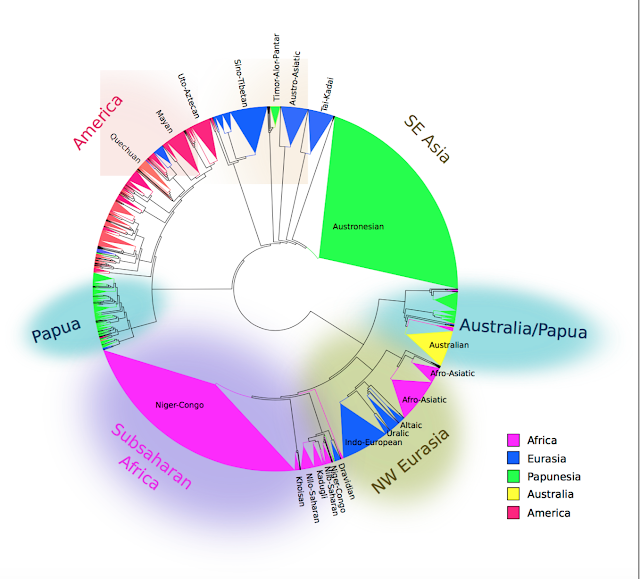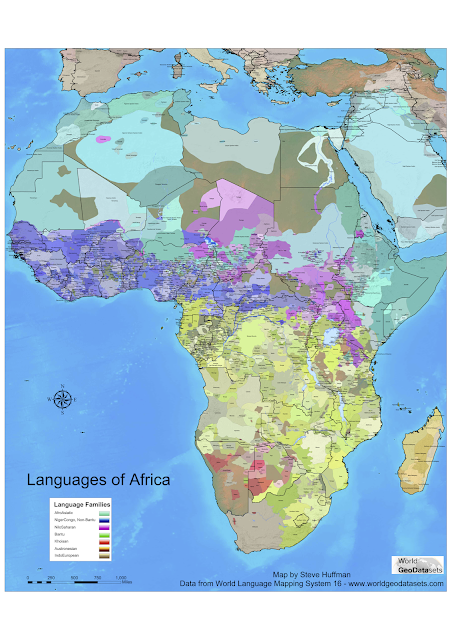Nasality in a world of orality
Nasal leakage: It's a
real condition affecting field linguists around the world.
Does
the language you work on have nasal sounds? Rhetorical question! Of course, it
does! Even if nasality is a non-contrastive feature of a language, air finds
its way out through the schnoz one way or another during language production [WALS; nasality]. There's no stopping the all-knowing nose.
While the burning question on everyone's mind is, if the magnificent bone structure of Worf's forehead is connected to his nasal cavity, what kind of resonance can we expect, there's a more pressing issue here (yes, really).
While the burning question on everyone's mind is, if the magnificent bone structure of Worf's forehead is connected to his nasal cavity, what kind of resonance can we expect, there's a more pressing issue here (yes, really).
A survey of 372[1] grammars listed on the Grammar Watch List of the Association of Linguistic Typology revealed that empirical bases for claims regarding nasality are virtually non-existent. In cases were nasality was described, they were solely based on impressionistic observations. The reasons for this in the past had often been just; equipment for analysing nasality is intrusive, expensive, delicate, not very portable; especially in remote areas. Deciphering nasality (especially, pre-/post-, anticipatory/carryover, regressive/progressive, allophonic nasalisation and nasal harmony) from a normal audio recording can either be impossible or a huge pain in the sa'Hut.
Now for the shameless plug. If nasality is something you'd like to document empirically in your grammar, consider the Earbuds Method; an absurdly cheap and easy, yet robust, method for empirically identifying not only the presence of nasality in the speech stream, but also information on the duration and timing of nasal gestures. Results can be made visual in Praat or in R (scripts are included in the appendix of the article).
The basics:
1.) Purchase 'dollar store' stereo earbuds (a pair for each consultant).
2.) Set your audio recorder to stereo.
3.) Plug the earbuds into the mic jack.
4.) Place one earbud with the silicon tip facing upwards toward a nostril (or in the nostril of the consultant is comfortable with this). Place the other one at the corner of the mouth with the tip facing forward.
5.) Press record, elicit words or sentences. Press stop.
6.) Import the recordings into Praat, follow the steps in the paper for visualisation, and see the magic.
May thy noses never stop leaking on to thy grammars.
1.) Purchase 'dollar store' stereo earbuds (a pair for each consultant).
2.) Set your audio recorder to stereo.
3.) Plug the earbuds into the mic jack.
4.) Place one earbud with the silicon tip facing upwards toward a nostril (or in the nostril of the consultant is comfortable with this). Place the other one at the corner of the mouth with the tip facing forward.
5.) Press record, elicit words or sentences. Press stop.
6.) Import the recordings into Praat, follow the steps in the paper for visualisation, and see the magic.
May thy noses never stop leaking on to thy grammars.
These graphs
present a word-initial prenasalized stop and anticipatory nasalization in the [õ] vowel as the velum lowers to reach
its target position for the [m] segment. The rest of the segments appear as oral. The nasal
track appears as a red solid line while
the oral track appears as a blue dashed line. Language: Kirundi, a Bantu language spoken in Burundi.
La Méthode Earbuds
[1] The Grammar Watch List of the
Association for Linguistic Typology is the most complete list of recently published
grammars available. It includes grammars published worldwide between 1993 and
2007. There are 574 publications on the list that refer to spoken languages,
but we only had access to 372 of these.








If you want to learn more, read this paper Jesse wrote with Martin Kohlberger
ReplyDeleteStewart, J., & Kohlberger, M. (2017). Earbuds: A Method for Analyzing Nasality in the Field.
https://www.researchgate.net/publication/274373729_Earbuds_A_new_method_for_measuring_nasality_in_the_field